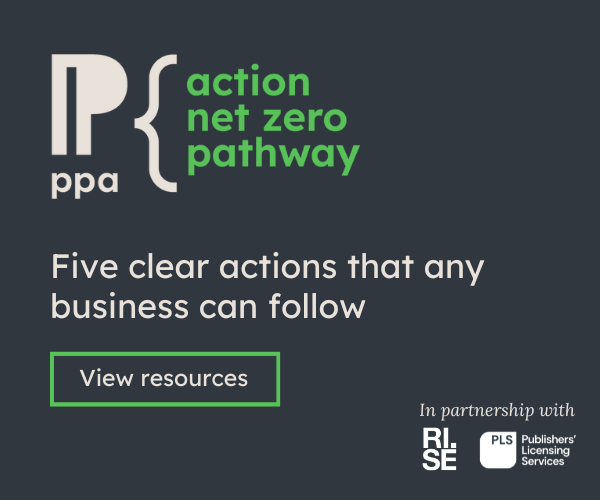What made you want to work in publishing?
I like to tell the good stories and celebrate people and their achievements, and publishing is the perfect route to do just that.
Chart your career from the start to where you are now.
I started working in customer publishing three days after finishing university and have been in the industry ever since. It is now obviously content marketing and publishing is a part of it. I was a writer and editor and then I realised I liked the business side so I started getting involved in the running of things. Apart from design, production and sales I have done every publishing function there is in the last 20 years. I now work for Think where I am currently an Executive Director, running the business and professional side of the business.
You recently spearheaded the Re:member Report. Can you explain what this was?
Back in 2011 we decided to survey some professional membership organisations because it is a relatively niche community with lots of different specific challenges. We asked people how they communicated. Was it through magazines, podcasts, e-mails? In 2011 it was mainly a magazine and a newsletter. 10 years on and magazines still have their place, but it is all about the different channels they work across and how we can help our clients to create a programme with reduced budgets and resources that really delivers.
What did you hope to achieve with the report?
We set up the survey in February last year and then we shut it down when lockdown started. We were sat on this rich pot of information about what people said they were going to do in 2020, which was essentially not much different to 2019. They then went on to pivot to more digital platforms, which arguably they should have done long before. The survey was a brilliant way for us to work out what we should be recommending and what is proven to be effective.
Why do you think it took a pandemic for us to realise that webinars and the increased use of digital platforms are the way forward?
I think we plan so much we miss the point. In the last year we have found that people have been a lot more forgiving. We didn’t have the time to waste and we moved into a world where agility and lack of perfectionism was celebrated. When nobody minds that you are getting it wrong, you end up innovating and doing a shed load right.
What were the main findings from the report?
Webinars were not just one of the most popular channels – they have gone from 70% to 95% of people using them and are now the single most effective channel used by membership organisations everywhere. That’s interesting because since 2011, the most effective channel has been a magazine. The other major shifts have been a move to being more strategic. You have got to know what you are saying at the beginning, so it is vital to think about audience mapping and messaging. People are also now starting to think about what they put behind their member login online versus what they leave outside. One other thing is that bounce rates on websites are still quite high, which would suggest that we are quite good at getting people to websites but not as good at keeping them there. It was also interesting to see that when people were asked whether they would go back to annual dinners, there wasn’t an uptake on this. I feel like the pandemic has given us all the tools to rewrite the programme. Membership organisations are now fit for a younger generation and that is what I think is the best by product of the pandemic.
You mentioned that webinars have now replaced magazines as the most effective channel used by membership organisations. What happens to magazines?
In 2011 I would have said that we wouldn’t be talking about print magazines in 2021. The truth is, while there is a change in frequency from monthly to quarterly, there is an increase in quality content and thought leadership. People have found that print has its home and place, you just have to get the most out of it as a product.
Was there anything in particular that surprised you about the findings?
A lot of organisations said that they don’t know their audience very well and that their data isn’t great. When you asked them whether or not they did focus groups or polls or roundtables, the numbers are tiny. 14% of organisations do flash polls. 20% do focus groups. In order to solve the big data problems, you need to take baby steps and try and understand your members. At the end of the day, our publications are all about creating a conversation between a community and you have to root the conversation in what people in that community believe in.
How is the post-pandemic communication journey different to the pre-pandemic communication journey?
We have been able to throw a grenade into the stuff you cannot touch. Now we are talking about creating the content that people need and putting it where they need it, not just in a bucket where they might or might not access it. For example, long read e-mails are high performing and engagement levels are off the scale. This has forced us to question where content could go to elicit a better response. It’s now all about learning and developing in this way rather than having a channel-first approach.
What’s on your radar?
How do we get the members of the future? Membership had a renaissance last year and people felt that they could resonate with their community because it wasn’t just a print magazine. If we are really going to engage future generations then we really have to think about how organisations and publications make sure they are the voice and that they listen, hear and react in the right way. We all want to belong, and magazines and brands allow for this.
What magazine would you stockpile?
BBC Good Food. It is the magazine that I have more of than any other magazine I have ever owned. For me, the way they have evolved and diversified as a brand has meant they provide a consistent and intelligent experience across all channels. They know me and want to serve me the right stuff. Wanderlust magazine have also done really well throughout this last year and Gardeners World have also thrived. They really nailed it.









